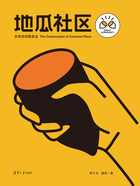
参考文献
[1] 吴志强.从8亿农民到8亿城市人,城镇化下一程怎么走[EB/OL].(2020-04-17)[2020-04-19]. https://web.shobserver.com/wxShare/html/237824.htm?from=timeline&isappinstalled=0.
[2] 陈世清.对称经济学 术语表(一)[EB/OL].(2020-04-17)[2020-04-19]. https://wenku.baidu.com/view/67e8acbeb4daa58da1114a58.html.
[3] 唐燕.新冠肺炎疫情防控中的社区治理挑战应对:基于城乡规划与公共卫生视角[J].南京社会科学,2020(3):8-14+27.
[4] 唐燕.新常态与存量发展导向下的老旧工业区用地盘活策略研究[J].经济体制改革,2015(4):102-108.
[5] 唐燕,杨东,祝贺.城市更新制度建设:广州、深圳、上海的比较[M].北京:清华大学出版社,2019.
[6] DAVIDOFF P. Advocacy and pluralism in planning[J]. Journal of the American institute of planners, 1965, 31: 331-338.
[7] FORESTER J. Planning in the face of conflict: negotiation and mediation strategies in local land use regulation[J]. Journal of the American planning association, 1987, 53: 303-314.
[8] SAGER T. Communicative planning theory: rationality versus power[M]. UK: Avebury,1994.
[9] ARNSTEIN S. A ladder of citizen participation[J]. Journal of the American institute of planners. 1969, 35(4): 216-224.
[10] FRIEDMANN J. The new political economy of planning: The rise of civil society[M]//Mike D, Friedmann, et al. Cities for Cities. West Sussex: John Wiley & Sons, 1998.
[11] HEALEY P. Collaborative planning in a stakeholder society[J]. Town planning review, 1998(1): 7.
[12] 唐燕.精细化治理时代的城市设计运作:基于二元思辨[J].城市规划,2020(2):20-26.
[13] 曼纽尔·卡斯特.信息时代三部曲:经济、社会与文化(网络社会的崛起,认同的力量,千年终结)[M].夏铸九,等,译.北京:社会科学文献出版社,2003.